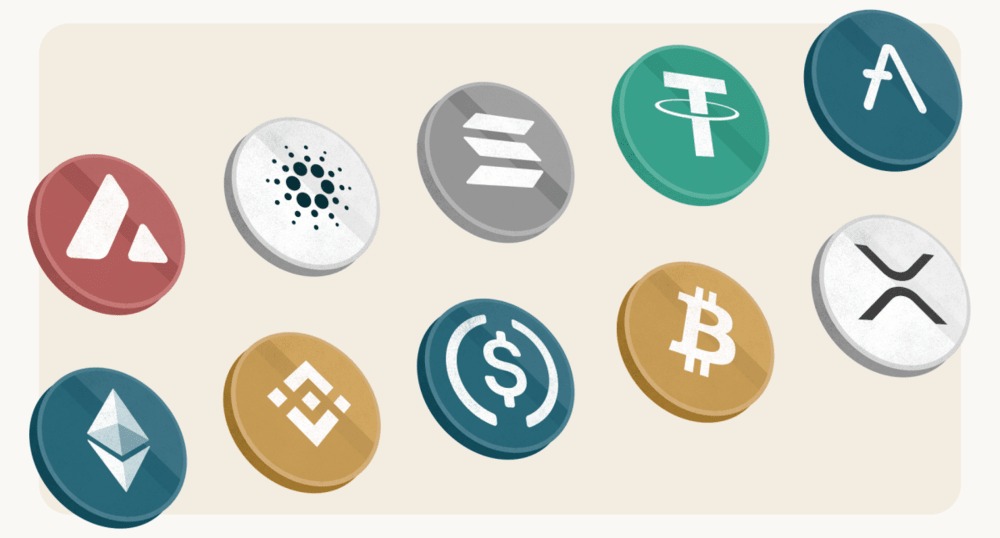How is cryptocurrency different from traditional money?

Cryptocurrency differs from traditional money in several fundamental ways, starting with its structure and governance. Traditional money, also known as fiat currency, is issued and regulated by central banks and governments. It exists in both physical (cash) and digital forms, and its supply can be adjusted based on monetary policy decisions. Cryptocurrencies, on the other hand, are decentralized and rely on peer-to-peer networks and cryptographic algorithms to manage transactions and supply.
One major distinction lies in how each type of currency is created. Central banks can print more money or adjust interest rates to influence the economy, often leading to inflation or deflation. Cryptocurrencies like Bitcoin are mined through a process called Proof of Work, which requires computational power to validate transactions and create new coins. Others, like Ethereum 2.0 or Cardano, use Proof of Stake, where validators are chosen based on the amount of cryptocurrency they hold and are willing to lock up as collateral.
✍️ The energy debate around Bitcoin mining is ongoing. Read our crypto guide to understand sustainability challenges, green mining initiatives, and future eco-friendly solutions.
Another key difference is control and censorship. Traditional financial systems are subject to regulations, account freezes, and surveillance. Banks can block transactions or deny access to funds based on legal or political circumstances. Cryptocurrencies are designed to be censorship-resistant. If you control your private keys, you control your funds, and no third party can intervene or reverse your transactions.
Accessibility and inclusion are also areas where cryptocurrency diverges. Setting up a traditional bank account may require paperwork, identification, and minimum deposits—barriers that can exclude many people worldwide. In contrast, anyone with a smartphone and internet connection can create a crypto wallet and start transacting globally within minutes.
Transparency and privacy mark another contrast. While bank transactions are private and recorded by institutions, most cryptocurrencies use public ledgers. Anyone can view transaction histories on a blockchain, though the identities behind the wallet addresses remain pseudonymous. Some cryptocurrencies like Monero and Zcash enhance privacy further by obscuring transaction details.
Lastly, the speed and cost of transactions can be dramatically different. Traditional cross-border payments may take days and incur significant fees. Cryptocurrencies can transfer value across continents within minutes, often with lower costs, although network congestion and volatility can affect fees and timing.
In essence, cryptocurrency offers an alternative model of money—programmable, decentralized, and borderless—challenging the control and infrastructure of legacy financial systems. While it doesn't replace traditional money yet, it introduces powerful new capabilities that are reshaping how we think about value exchange.
What are the most popular types of cryptocurrencies?
The world of cryptocurrencies is vast, with thousands of different coins and tokens serving various purposes. However, a handful of them have stood out due to their market capitalization, user adoption, and technological significance. These leading cryptocurrencies represent different categories and use cases, ranging from digital gold to decentralized applications.
Bitcoin (BTC) remains the most well-known and valuable cryptocurrency. Often referred to as digital gold, Bitcoin is primarily used as a store of value and a hedge against inflation. Its capped supply of 21 million coins and robust security model have earned it a reputation for reliability and scarcity. It is the first cryptocurrency ever created and still dominates the market in terms of influence and adoption.
Ethereum (ETH) is the second-largest cryptocurrency by market capitalization and serves a very different role. While Bitcoin focuses on secure and decentralized value transfer, Ethereum is a programmable blockchain that allows developers to build smart contracts and decentralized applications (dApps). This flexibility has made Ethereum the backbone of the decentralized finance (DeFi) and non-fungible token (NFT) ecosystems.
Binance Coin (BNB) is the native token of Binance, the world’s largest cryptocurrency exchange. Initially launched on Ethereum, BNB now operates on Binance’s own blockchain, the BNB Chain. It is used to pay for trading fees, participate in token sales, and access various services within the Binance ecosystem.
Solana (SOL) is a high-performance blockchain known for its fast transaction speeds and low fees. It’s designed for scalable decentralized applications and has become a favorite platform for NFT projects and DeFi protocols. Solana uses a unique combination of Proof of Stake and Proof of History to achieve its speed.
Cardano (ADA) is a research-driven blockchain project that emphasizes security, scalability, and sustainability. It uses a Proof of Stake consensus mechanism called Ouroboros and is gradually rolling out smart contract functionality. Cardano is popular among academic and enterprise communities for its structured development process.
Ripple (XRP) focuses on facilitating fast and low-cost cross-border payments for financial institutions. Unlike most cryptocurrencies, XRP doesn’t use mining and relies on a consensus protocol among trusted nodes. Its partnerships with banks and payment providers have positioned it as a contender in the global remittance space.
Other notable cryptocurrencies include:
* Polygon (MATIC), a scaling solution for Ethereum
* Litecoin (LTC), a faster alternative to Bitcoin
* Chainlink (LINK), which connects smart contracts to real-world data
* Avalanche (AVAX), another high-speed blockchain for DeFi and dApps
Each of these cryptocurrencies brings something different to the table. Some are designed for payments, others for programmability, and some aim to improve the scalability and efficiency of blockchain technology itself. Their popularity reflects both their technical capabilities and the size of the communities that support and develop them.
Note: IndiBlogHub features both user-submitted and editorial content. We do not verify third-party contributions. Read our Disclaimer and Privacy Policyfor details.







